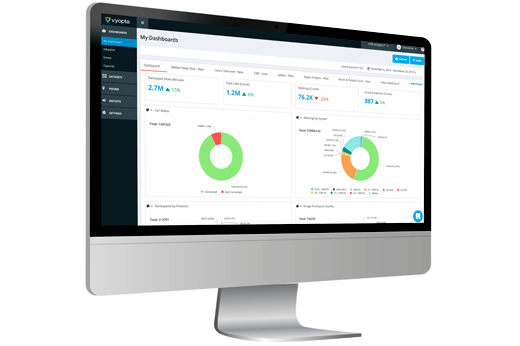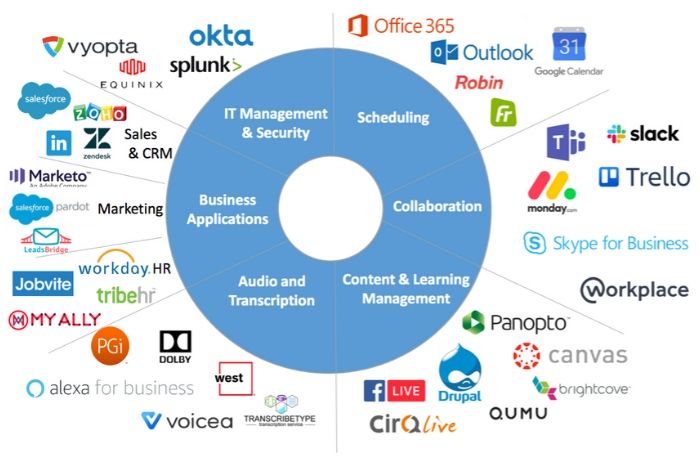There’s a whole lot of truth to the adage that “data equals dollars.” For companies that are scaling up their unified communications tools to cope with the shift to remote work brought on by the COVID-19 pandemic, it’s important to know what’s working in real time and what trends are emerging that could require attention and resources down the road.
The analytics provided by Vyopta offer flexible and precise information on every aspect of your company’s online meetings and remote work environments.
The key to great data is knowing how to find the pieces that will offer the most valuable insights into your performance for users from a daily standpoint and over the long term. Chris Gentsch, Vyopta’s Customer Success Manager, and Sales engineer Ben Ng gave their perspective on some of the most important metrics to monitor to make sure your remote working solutions – whether cloud based or using on-premises networks – are carrying the load.
Tracking Attendance, and Compliance
The growth in distance learning in the wake of the COVID-19 spread means K-12 and higher education systems are figuring out on the fly how to show they’ve delivered classes to students who have participated. That information matters to meet basic compliance requirements, and Vyopta can show how well-attended individual teachers’ or professors’ classes are so administrators can take steps to address problems, either in course content or with how they’re using a given meeting platform.
“One thing we’re dealing with now is, how do I keep track of professors actually making it to meetings or creating meetings and saying, how many students are attending?” Ng said. “How many virtual classes am I holding? Are the professors holding the classes they’re supposed to? If I wanted to dig into each class, I’d see who the participants are to kind of start looking at compliance. Are people showing up?”
Addressing Capacity Infrastructure
With teams far more dispersed than most companies originally planned for, the demand placed on networks for remote meetings and mobile remote access has increased by orders of magnitude. That growth means IT departments need to analyze how networks are being used, whether there is enough capacity to keep up with demand and – if not – how to prioritize moving to temporary cloud solutions versus investing in more infrastructure and/or on-site tools. Vyopta’s dashboard can be customized based on the exact needs to monitor capacity issues and get a handle on how usage is changing so you can make the best moves for the future.
“We’ve got customers that are blowing up their meeting servers right now and they’re trying to figure out what’s going on,” Ng said. “You may not be able to monitor real time, but when you see yesterday’s data compared to the day before, we’ve seen that increase. You can use our analytics to start looking at capacity planning. All of the sudden we have customers that are doubling to quadrupling their meeting access.”
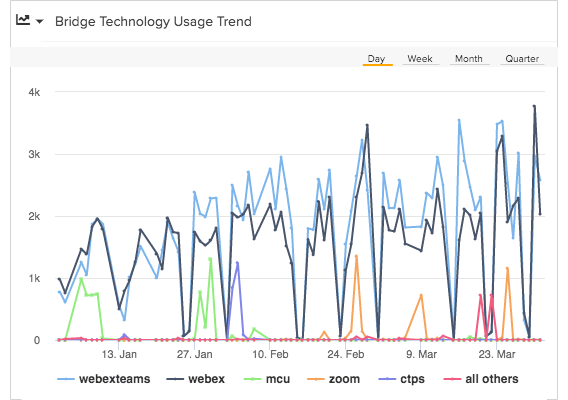
Call Quality Trends
Because performance issues on calls can dampen enthusiasm (especially for newer remote meeting users) or hamper the ability for teams to collaborate, one metric to monitor every day is the overall quality of calls and how much packet loss or jitter are coming into play. If an uptick in quality issues over a period of days or weeks is detected, Vyopta can give IT staff the information they need to troubleshoot, no matter if the calls are taking place on a cloud platform or using on-site resources.
Gentsch said patterns in poor quality can usually reveal easy solutions that are often quickly addressed and make everyone happier with their remote meeting and collaboration experiences.
“If I want to I can go back a few days, a few weeks, a few months, even year over year and we can see the trend changing in terms of what meeting platform they meet using,” he said. “Maybe that shows, yeah, we’ve got a lot of people connecting from home offices now on their own Wi-Fi and maybe that kids are also streaming Netflix, YouTube and whatever and they’re kind of competing with what I’m seeing. So, I might want to talk with that user and say, is there any way that you could increase the bandwidth available when you’re in meetings?”
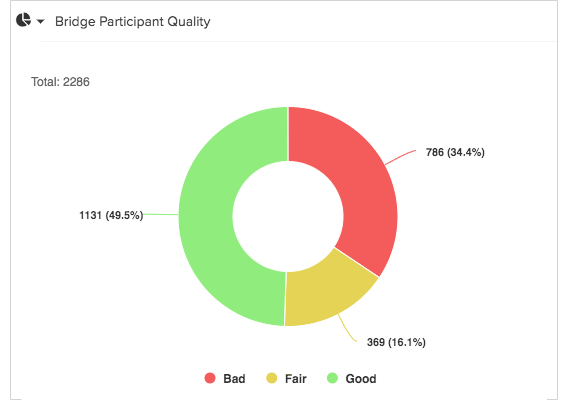
Productivity Matters
Some job classifications are more numbers based and easily analyzed than others, but the shift to remote work makes it more important than ever to have data on how much time is being spent working in some way. Whether tracking the number of calls made to sales prospects or the length and participation level of group collaboration sessions, the high-level data offered by Vyopta on how engaged remote workers are can provide valuable insights.
Ng notes that beyond a pure measure of time spent on calls or meetings, monitoring that data can be helpful in identifying training issues or other needs to make tools comfortable for new users so they can work to their full potential.
“If I take the same folks and trend down to say before everyone had to work remotely to right now and it’s the same group of people, I can look at is there a downward trend, or is there an upward trend?” he said. Rather than a Big Brother thing, those are areas where companies have to realize they should do some training for users to do remote work, because some users are not used to remote work. You can go to someone and say, ‘Hey, I see you haven’t used your WebEx account a whole lot. Why is that? Do you need training on it?’ We can kind of turn it around a little because two of the most important issues are education and adoption.”
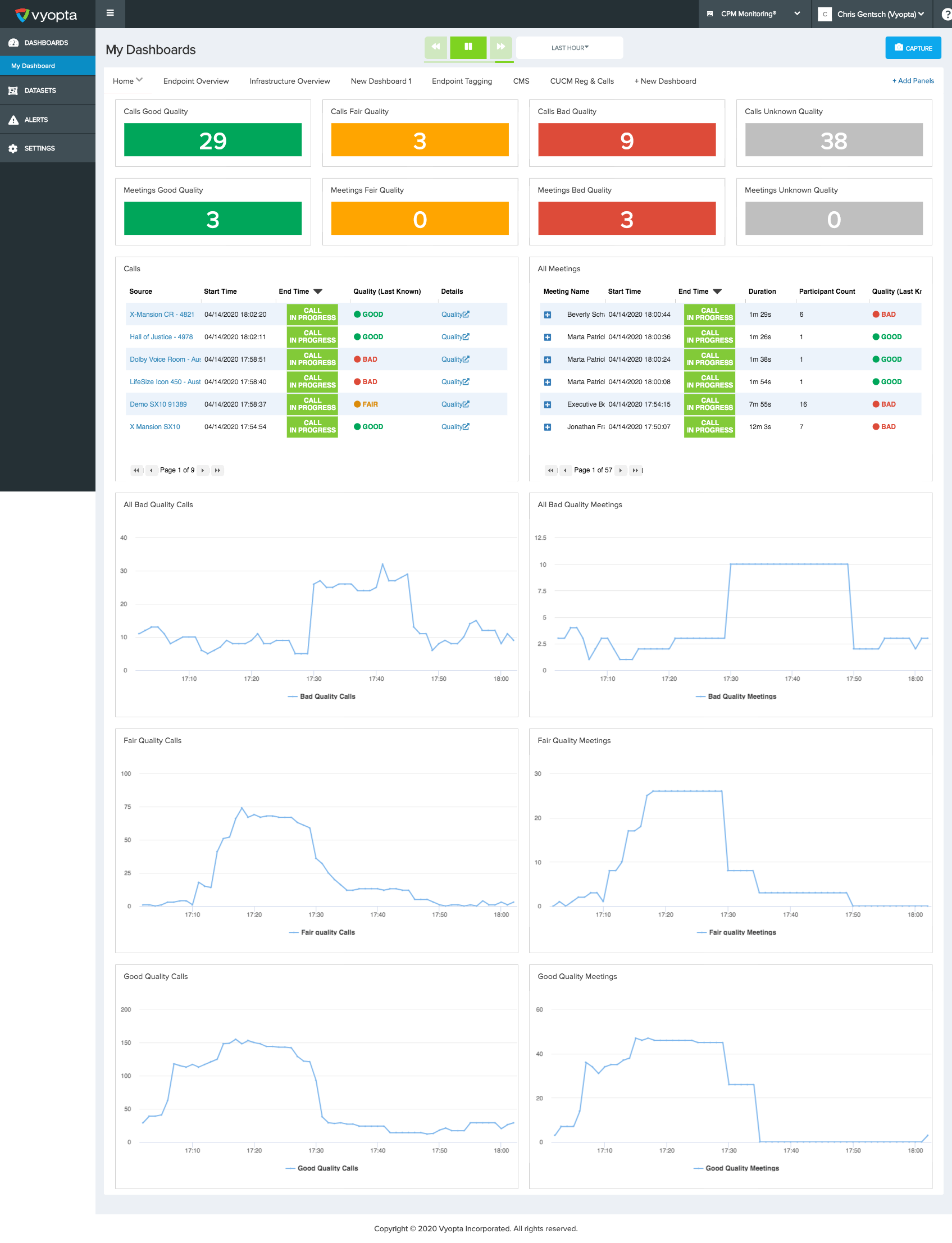
As part of our response to the COVID-19 pandemic, Vyopta is currently offering a free trial to help IT teams support massive expansion in remote work.
Chad Swiatecki is a business writer and journalist whose work has appeared in Rolling Stone, Billboard, New York Daily News, Austin Business Journal, Austin American-Statesman and many other print and online publications. He lives in Austin, Texas and is a graduate of Michigan State University. Find him online at https://www.linkedin.com/in/




